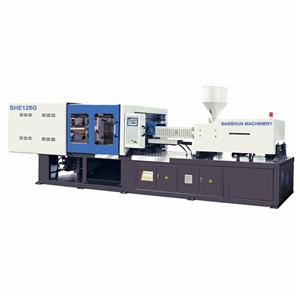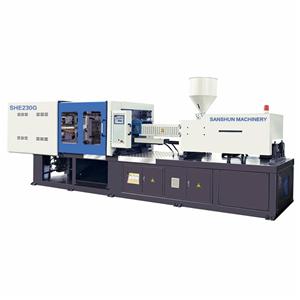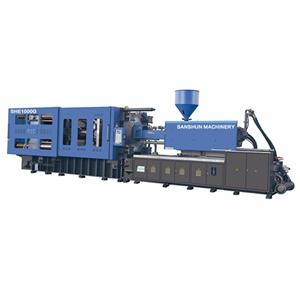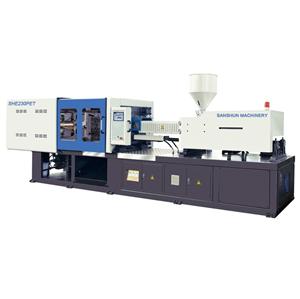- Home
- >
- News & Resources
- >
- Our Blog
- >
- Causes and solutions for the appearance of silver streaks, bubbles and vacuum bubbles in PC products
Silver products, bubbles, and vacuum bubbles appear in PC products, which is one of the common defects of PC materials. The causes of these defects are more and more complicated, so it is difficult to judge and eliminate.
Silver streaks (or gas lines) are defects in which the plastic is disturbed by gas during the filling process and appears in the direction of the melt on the surface of the product. The composition of the gas mainly includes water vapor, air, decomposition gas and solvent gas, among which water vapor, decomposition gas and air are common.
When these gases exceed a certain limit, after the injection molding, the cavity loses pressure, and the gas near the surface of the product will emerge, and is etched in the direction of the flow into a series of large and small bubble points that flash under the illumination. It is called silver or gas. In fact, the presence of gas during the injection molding process is unavoidable, and a considerable portion remains in the plastic interior.
When the pressure in the mold is large enough and the gas content does not exceed a certain limit, the gas is dissolved into the plastic in a dispersed state; but when the pressure in the mold is not large enough and the gas content exceeds a certain limit, the gas is It is released from the molten plastic and reaches the surface of the product to form a silver streak, which is trapped in a thick wall and becomes a bubble.
Whether it is the silver streaks on the surface of the product or the bubbles in the wall of the product, it may be the result of the action of one of the four gases or the combination of several gases. It is related to the raw materials, molds, plasticizing systems. Factors such as adjustment of process parameters and even changes in weather (especially changes in humidity) are highly relevant. So this question is more complicated. However, the focus of the problem and the solution should be focused on the gas, that is, how to control the gas content.
PC raw materials
(1) Water vapor Generally speaking, if bubbles are irregularly dispersed on the surface of the product, they are mostly caused by water vapor.
The hot melt of PC is very sensitive to moisture and requires a water content of less than 0.02%. Therefore, to control the moisture content, the material should be fully dried. Generally, the drying temperature of PC material is about 120 °C, the drying time is about 4h, and the time should not be too long. If it exceeds l0h, the material is easy to deteriorate, especially the material added with flame retardant is not suitable for drying time too long; The dehumidifying dryer has the best effect and has no effect on the material. Check whether the drying effect is good. You can use the air injection method to see if the injected material is continuous, smooth and not white.
(2) Air If the bubble particles are extremely fine and dense, they are mainly distributed around the gate of the product to form a ray pattern or a fan-shaped pattern, which is mostly caused by air.
The source of air is: entrained air inside the material. When there are many gate materials and the particle size is very different, it is easy to entrain air. Therefore, when using a gate material, it is best to filter out the powder. If the back pressure is too low during melting, the screw speed is high, the screw is retracted too fast, and the air is easily pushed to the front end of the barrel together with the material. Therefore, it is generally recommended to extend the melting time as much as possible during the cooling time, which is to improve the plasticizing quality. Very helpful.
If the temperature of the blanking section is not well controlled, if the temperature is too high, a part of the material will melt prematurely and block the passage of air from the discharge port; if the temperature is too low, the preheating will not be enough, so that a part of the pellets will be trapped in the humanized section. air. In addition, if the amount of looseness is too large, air will be taken in. In the above situation, generally adjusting the screw speed, back pressure and loosening amount can be roughly solved. Exhaust during filling.
In order to smoothly fill the PC material with higher melt viscosity, it is generally to increase the melt temperature and increase the injection pressure. Under high temperature and high pressure, if the injection rate is faster, the melt will suddenly pass through the narrow flow channel and gate into the cavity with larger free space, so that the gas released from the melt re-entrains the flow channel and the cavity. The air inside forms a high-speed jet state, and a trace of the dispersed airflow, that is, a gas pattern, appears on the surface of the condensed plastic.
In addition, if there are many corners in the cavity, the thickness difference is too large, or there are many inserts and the gate position is not good, the melt will surge into the cavity, and the air in the mode will form a vortex, which will form a gas at a certain part. Patterns, such as switch socket panels for molded electrical products, often occur because their sockets, connectors, and switches are concentrated in one location. The solution to this problem is to modify the mold on the one hand, strengthen the mold exhaust, optimize the gate position; on the other hand, reduce the filling rate, especially the injection rate of the gas-filled part.
(3) Decomposition gas Since the PC material needs to be formed at a high temperature, some decomposition is inevitable, but how to avoid a large amount of decomposition and how to remove the gas is worth exploring.
As with the above-described discoloration, the main cause of decomposition gas is that the melt temperature is too high. For example, if the temperature of the barrel is set too high, or the heating ring of the barrel is out of control, the nozzle should be started, and the heating ring should be inspected step by step to reduce the barrel temperature; the melt stays in the barrel for too long (such as small production). The product uses large equipment, the amount of cushion is too large), the molding cycle is too long, or the material in the barrel and the dead corner are decomposed due to prolonged heating; or the melt is subjected to strong shearing in the barrel. If the compression ratio of the screw is too large, the screw speed is too high, and the back pressure is too large to be decomposed.
In addition, the nozzle aperture is too small, the mold gate, the flow passage is too small, and the cavity resistance is large, so that the passing melt can be locally overheated due to friction, so that the nozzle aperture and gate are taken when processing the PC material. The size of the flow channel is large, the exhaust groove is deep, and it is not suitable to make thin-walled products.
Another important reason is that the PC itself is of poor quality and easy to decompose. This is often overlooked by the user, and the problem is pushed to the mold and processing equipment, so that the correct way to solve the problem can not be found.
(4) The solvent gas solvent gas is mainly related to the operation quality in the production, such as the cleaning of the barrel is not clean, and the additive is added too much. The solvent gas can be removed by sufficient drying to remove most of it, and it does not affect the gas grain very much.
It is sometimes difficult to distinguish whether a bubble or a vacuum bubble exists inside a transparent article. It is generally believed that if a bubble point is found in the moment of mold opening, and the volume does not change after storage for a period of time, it is a bubble, which is caused by gas interference; if it appears and becomes large during the mold release cooling process, it belongs to a vacuum bubble.
The formation of the vacuum bubble is due to insufficient material or low pressure during filling. Under the rapid cooling of the mold, the surface of the molten material in contact with the mold wall is first solidified, and then the melt of the central portion is cooled and shrunk, causing the volume to shrink and form a hollow. Bubble point.
Its solution
1. Increase injection pressure, injection time and material volume;
2. Adjust the material temperature: When the vacuum bubble is away from the gate position, increase the material temperature to make the melt flow smoothly, and the pressure can be transmitted to the part far away from the gate;
3. When the vacuum bubble is near the gate, the temperature of the material can be lowered to reduce the shrinkage;
4. Appropriately increase the mold temperature, especially the mold temperature at the local part of the vacuum bubble;
5. The gate is placed on the thick part of the product to improve the flow condition of the nozzle, runner and gate and the exhaust condition of the mold;
6. Shorten the cooling time of the product in the mold, and if necessary, slowly cool the product into hot water;
7. The products formed by the point gate can be used to solve the vacuum bubble problem by slow speed and low temperature molding. When there is vacuum bubble on the flow channel, the flow channel size can be increased.
In addition, in the production process, it was found that the bubbling phenomenon occurred in the thick-walled portion of the PC product immediately after demolding, which was caused by insufficient expansion of the gas inside the PC. Generally, it can be solved by extending the cooling time, enhancing the cooling effect, increasing the pressure and time of holding pressure, and delaying the decomposition of PC.







